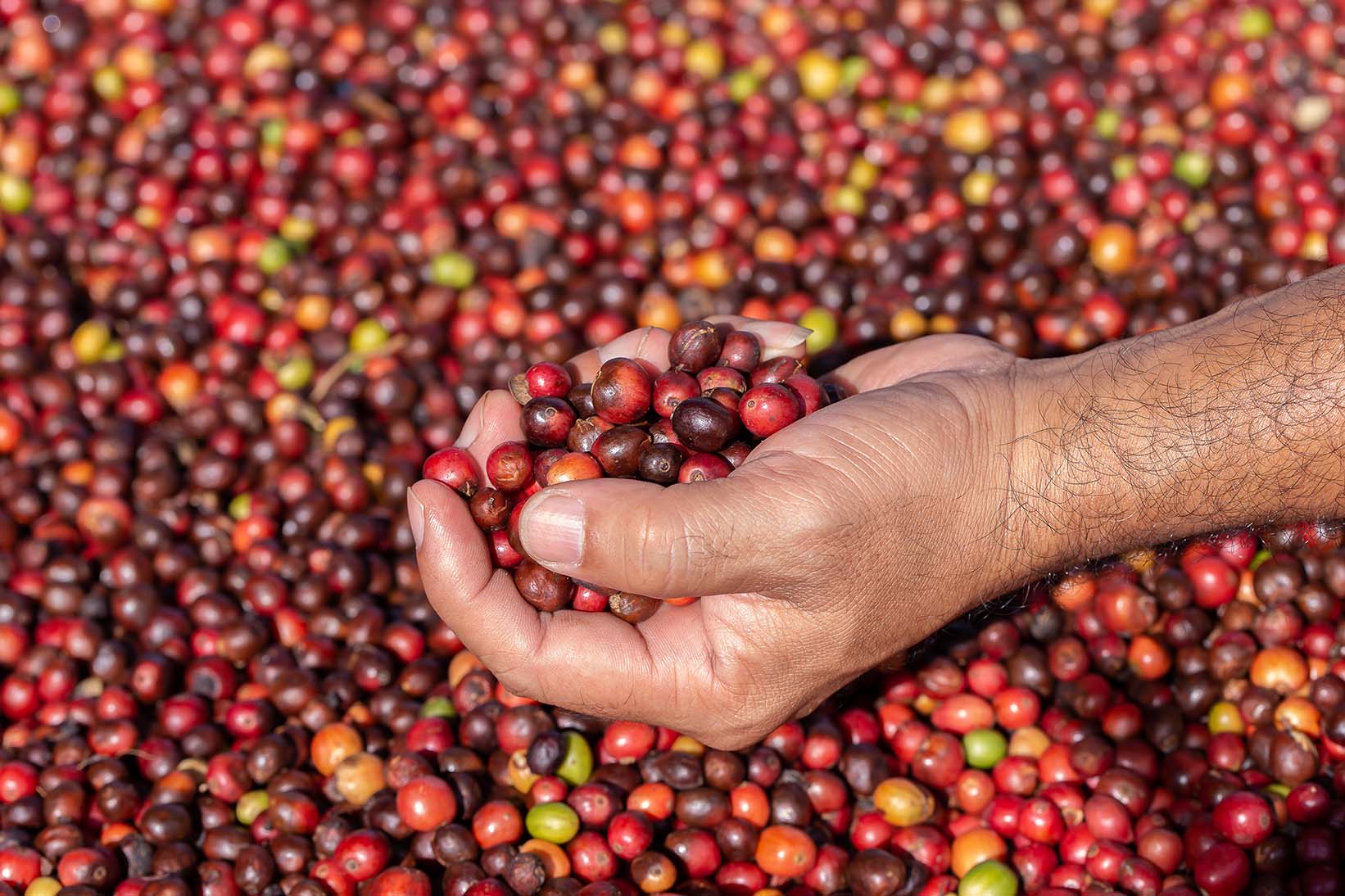Most coffee beans brought by coffee growers and processors to dry mills are in parchment or pods. Such beans are not apt for coffee roasting, so they must be prepared accordingly before shipping.
Let’s see what all steps are carried out during the dry milling process as per the buyer’s specifications.
Hulling & De-stoning
Before getting hulled or peeled, cherry pods and coffee parchments are cautiously checked for stones and contaminants. Based on the specifications, the huller may also add further polishing by eliminating the part of the silver skin of the green beans. This is particularly beneficial for Robusta coffee beans where silver skin can cause bitterness.

Pneumatic Green Coffee Separator
It is fundamentally an air fan that blows away the remaining impurities, husk, or parchment as well as the broken and light beans from the coffee.
Sizing
In this stage, the coffee dry mills employ an array of sieves of various sizes and pile them together. Coffee beans are then circulated from top to bottom and collected on a size basis. Depending on the type of bean to separate, the sieve openings can be round or oblong. Oblong sieves allow the regular coffee beans to pass through, narrowing the round beans or pea-berries.
Density Sorting
Density sorting is generally achieved by using a densimetric table, which is a perforated surface at a particular angle that blows and shakes the coffee simultaneously. Each perforation includes a tiny edge that allows the air to circulate from below counteracting gravity force caused by the slope of the table, briefly lifting each coffee bean off the ground. Less dense beans would persist at the lower end of the table while the denser beans may use the perforated edges to rise to the higher end. of the Collecting coffee beans from opposite sides of the table allows for separation. Any coffee in between would be recirculated until no notable quantity of coffee beans is left at the lower end.
Color Sorting
This optional method usually involves optical machines for scanning every single bean at high speeds. A burst of compressed air removes the beans that do not satisfy the predefined coffee color profile.
Hand Sorting
Hand sorting finds its space where the machines fail to detect the right coffee beans based on shapes, colors, or appearances. This is also an optional method where coffee gets sorted manually.

Storage & Aggregation
In most cases, most farmers lack access to enough storage spaces and the number of desired coffee bags for packing. For this reason, certain dry mills also offer storage spaces and bags as an added service to farmers.
Bagging
Bagging involves preparing coffee for exports once the coffee sorting and the dry milling stages are completed. It is performed conferring to the buyer’s directions.
Export
To export coffee, the beans are consolidated and filled in the containers physically plus managing all required paperwork and legal processes. Typically, costs are met by the coffee buyer, while exporters or dry mills are in charge of logistics and documentation.

The industry and consumers frequently undervalue and ignore the dry mill’s significant contributions to the coffee value chain. Dry mills are unquestionably a strategically significant element in the value chain. Their actions and commercial practices could help or hinder coffee farmers‘ success, and even the performance of entire nations. Sustainability is essential to the survival of the entire coffee industry. Certainly, dry mills have a major role to achieve it.
Understanding the significance of coffee dry mills, Kerchanshe Trading PLC has successfully installed a dry mill at Bule Hora branch that efficiently works on the most modern technologies and principles to help simplify the coffee chain.
